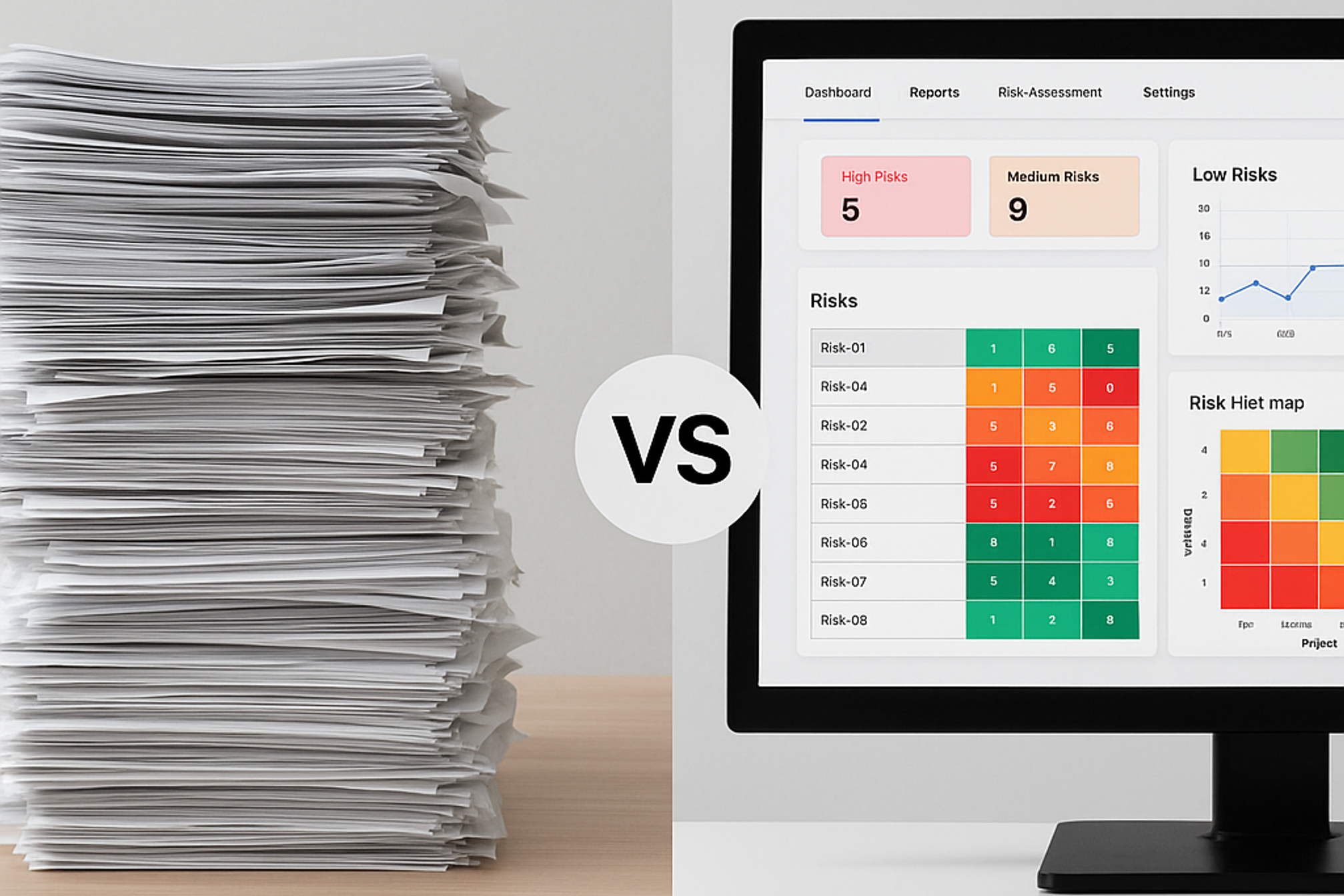Thursday, October 2, 2025
How to Build a Compliance Risk Map in 6 Steps


Introduction
A compliance risk map is the cornerstone of any compliance framework. By identifying and assessing your organization’s regulatory, legal, and ethical risks, you create the foundation for a program that is both practical and effective. It allows you to design specific actions to address those risks, allocate resources where they matter most, and demonstrate due diligence to regulators, auditors, and stakeholders.
This step-by-step risk mapping guide draws on methodologies like ISO 37301, UNE 19601, and COSO. Whether you’re building your first risk map or fine-tuning an existing one, the process will help you create a compliance program that actually works.
Step 1: Define the Scope of Your Risk Map
Before diving in, set the boundaries of your exercise. A well-defined scope ensures your risk map is both relevant and usable.
Ask yourself:
- Which business areas, subsidiaries, or geographies are in scope?
- Do you want to cover all compliance risks (corruption, antitrust, data protection, AML, ESG) or just one area (e.g., anti-corruption risk map under Sapin II)?
- Is your goal to prepare for a certification (ISO 37001, UNE 19601, UNE 19603)?
Put the scope upfront in your risk map. It shows auditors and regulators that you’re following a clear methodology.
Step 2: Identify Compliance Risks
Next, gather the information you need to identify where your risks lie. Use both internal and external sources.
Internal sources:
- Audit and compliance reports.
- Financial statements and management reports.
- Procurement and sales records.
- Whistleblowing reports, employee feedback.
External sources:
- Regulatory and legal updates in your markets.
- Sector-specific characteristics and benchmarks.
- Enforcement activity in your industry.
- Media reports that highlight reputational risks.
- Geopolitical and market trends.
By combining these inputs, you get the full picture of your operating context. For example, a company that earns most of its revenue from public contracts will be more exposed to anti-corruption risks, while a company with a 60% market share is more exposed to antitrust issues like abuse of dominance.
This holistic view is what makes your risk map credible and effective.
Step 3: Evaluate and Score Risks
Now that you know your risks, it’s time to evaluate them.
Likelihood and Impact:
- Likelihood: How likely is it that the risk will materialize?
- Impact: What damage would it cause (financial, legal, reputational, operational)?
Inherent vs. Residual Risk:
- Inherent risk = exposure before applying controls.
- Residual risk = what’s left after controls are in place.
Using intermediaries in a high-risk country = high inherent risk. But if you have strong due diligence and contractual safeguards, the residual risk might be reduced to medium.
Using a simple 1–5 scoring system for likelihood and impact lets you compare risks and build a heat map.
Step 4: Prioritize Risks with Heat Maps and Context
Not all risks merit the same attention. Some need urgent action, others just ongoing monitoring.
A risk matrix (heat map) helps you visualize risks by likelihood and impact. But don’t stop there. Add context to set priorities:
- Regulatory expectations (e.g., Sapin II requires a corruption risk map for companies meeting certain thresholds).
- Interactions with public officials (always high priority).
- Financial exposure (fines, contract losses).
- Reputation risk (will it land you in the headlines?).
- Business strategy alignment (is the risk tied to critical markets or products?).
This way, prioritization reflects reality, not just numbers.
Step 5: Define Controls and Mitigation Actions
A risk map isn’t just a diagnosis — it’s a roadmap.
First, document existing controls:
- Policies and procedures (anti-bribery policy, data privacy procedures).
- Approval workflows and segregation of duties.
- Regular training for high-risk functions (procurement, sales, government relations).
- Due diligence processes (KYC, supplier checks).
- Monitoring tools (transaction monitoring, whistleblowing channels).
Then, add new mitigation actions where residual risk is still too high:
- Stronger third-party due diligence.
- Updating policies to fit new scenarios (e.g., expanding into a country where lavish hospitality is “business as usual”).
- Expanding training programs to new regions or teams.
- Implementing AI-based monitoring tools.
- Increasing compliance oversight in sensitive areas (like government contracts).
Assign risks and mitigation actions to a responsible owner and set deadlines. That’s how you turn a risk map into a living management tool.
Step 6: Review, Monitor, and Update Regularly
A risk map is not a one-off exercise. It should evolve with your company and its environment.
When to update:
- Annually (minimum best practice).
- After major events (M&A, new markets, regulatory changes like the AI Act).
- After incidents (audit findings, investigations, whistleblowing cases).
What to check:
- Are inherent risks still relevant?
- Are controls working?
- Is residual risk still acceptable?
Best practice: Use technology to move from static to continuous monitoring. With AI, you can:
- Keep risk assessments updated in real time.
- Track whether controls actually work.
- Generate dashboards and reports for management and auditors.
Conclusion
Building a compliance risk map doesn’t have to be overwhelming. With a structured, step-by-step approach, it becomes a practical tool that drives both compliance and business decisions.
Key Takeaways
- Don’t skip it: A risk map isn’t optional — it’s the foundation of an effective compliance program.
- Keep it simple but relevant: Focus on risks that matter most for your sector and strategy.
- Use it to drive action: A risk map without controls and follow-up is just a pretty chart.
- Make it dynamic: Update it regularly and leverage technology to keep it alive.
👉 Ready to take the next step?
- Download our free Compliance Risk Map Template to start building your own.
- Or book a demo with Naltilia AI and see how we can help you automate risk mapping, reduce costs, and save time.